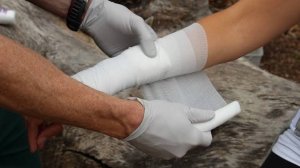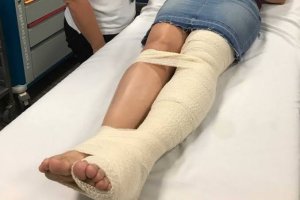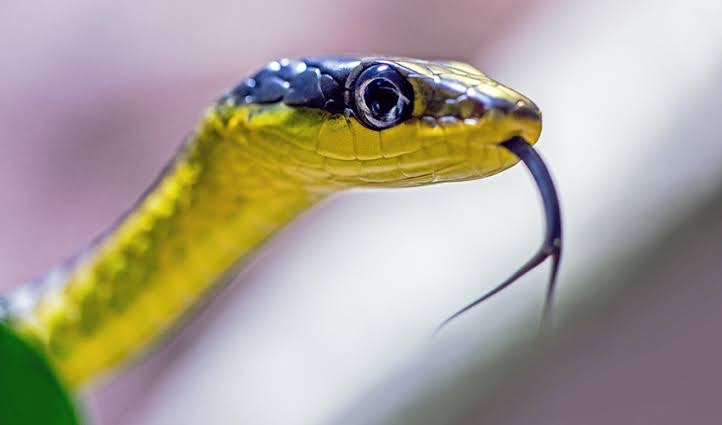HOW TO TREAT A SNAKE BITE
What happens when a snake bites?
When a snake successfully injects venom through a bite, it will travel through the lymphatic system to the bloodstream. From here, it can have serious consequences on the nerves and muscles which can then cause paralysis. But even when a snake is deemed harmless, its bite can still cause the victim to become infected or suffer severe allergic reaction, including anaphylaxis.
It’s an important skill to know how to treat a snake bite if working outdoors.
What to do first
- Get the person away from the snake.
- Ensure they rest and help them to stay calm.
- DO NOT move patient, this speeds up the venom moving through the body
- Call triple zero (000) and ask for an ambulance.
- Apply a pressure immobilisation bandage.
- Don’t wash the bite area — venom left on the skin can help identify the snake.
If a person collapses from a snakebite and does not seem to be breathing you must immediately call 000 and provide CPR.
Signs and symptoms of a snake bite
Not all snake bite victims show visible signs and symptoms and sometimes the onset of symptoms can be delayed. Either way, always seek medical assistance. Here are some of the obvious first signs and symptoms.

- A puncture wound – bite or scratch
- Pain around the bite area
- Tingling, stinging or burning or abnormal feelings around the skin
- Shakes and shivers
- Vision may become blurry
- Eyelids may become saggy
- Swelling, bruising ir bleeding from the bite
- Severe pain, either immediate or gradual
- Feeling anxious
- Nausea & vomiting
- Glands in the region of the armpit or groin where the bite has occurred becoming either swollen or tender
- Difficulty breathing or swallowing or speaking (change of voice)
- Headache, feelings of confusion, or stomach pain
- Paralysis
- Heartbeat becomes irregular
- Severe pain around the bite — this might come on later
- Dizziness / drowsiness / feeling faint
- Muscle weakness
Other dangerous symptoms
- Hypoxia
- Limb paralysis
- Cyanosis
- Conscious levels decrease
- Coma
- Death
Things NOT to do
- Don’t wash the snakebite area as the venom can help identify what snake has bitten you.
- Do not apply a tourniquets
- Do not cut the bite area
- Don’t suck out the venom
- Do not try to capture the snake
All first aid treatments starts with DRSABCD
- Danger (remove patient from danger if needed and also make sure you’re not in any danger)
- Response (check for response if patient is alert or conscious
- Send for help (call 000 if needed)
- Airway (check for obstruction of airway)
- Breathing (check if patient is reading)
- Circulation (CPR) if necessary)
- DeFib (source and apply defibrillation if needed)
Place a swab on the wound site. This helps capture any venom which guides the doctors on what sort of snake it is.

Where the snake bite has been to a limb, hand, or foot, apply a pressure immobilisation bandage, which is a broad bandage. For areas of the body where a pressure bandage cannot be applied, make sure you maintain firm pressure — this is vital to help stop venom circulating throughout the body.
Follow these steps to apply a pressure immobilisation bandage:
- First, put a pressure bandage over the bite itself. It should be tight and you should not be able to easily slide a finger between the bandage and the skin.
- Next, use a heavy crepe or elasticised roller bandage to immobilise the whole limb. Start just above the fingers or toes of the bitten limb and move upwards on the limb as far as the body. Splint the limb including joints on either side of the bite.
- Keep the person and the limb completely at rest. If possible, mark the site of the bite on the bandage with a pen.
- Help the victim remain as relaxed as possible and try to ensure they do not move around.
Uing another bandage (or scarf / t-shirt) secure legs together, or put arm in a splint.

Keep the patient still.
Check that a 000 call ihas been made.
Record the time that the bite occurred and when you applied the bandage
Monitor the patient’s pulse and breathing. Record for the doctor. If there are any changes in their condition, write it down.
Anaphylactic shock
Some people occasionally have a severe allergic reaction to being bitten by a snake. Their whole body can react to the bite within minutes, which can lead to anaphylactic shock (anaphylaxis). Anaphylactic shock is very serious and can be fatal.
Symptoms of anaphylactic shock include:
- difficult or noisy breathing
- difficulty talking and/or a hoarse voice
- a swollen tongue
- persistent dizziness or collapse
- swelling or tightness in the throat
- being pale and floppy (young children)
- wheeze or persistent cough
- abdominal pain or vomiting
If someone is experiencing anaphylaxis, call triple zero (000) for an ambulance.
We hope you found this post on how to treat a snake bite helpful.
Here is a great St John’s Ambulance fact sheet which you can easily print out. Click here.
We have aother post on ‘Interesting facts about Australian snakes, click here.



Recent Comments